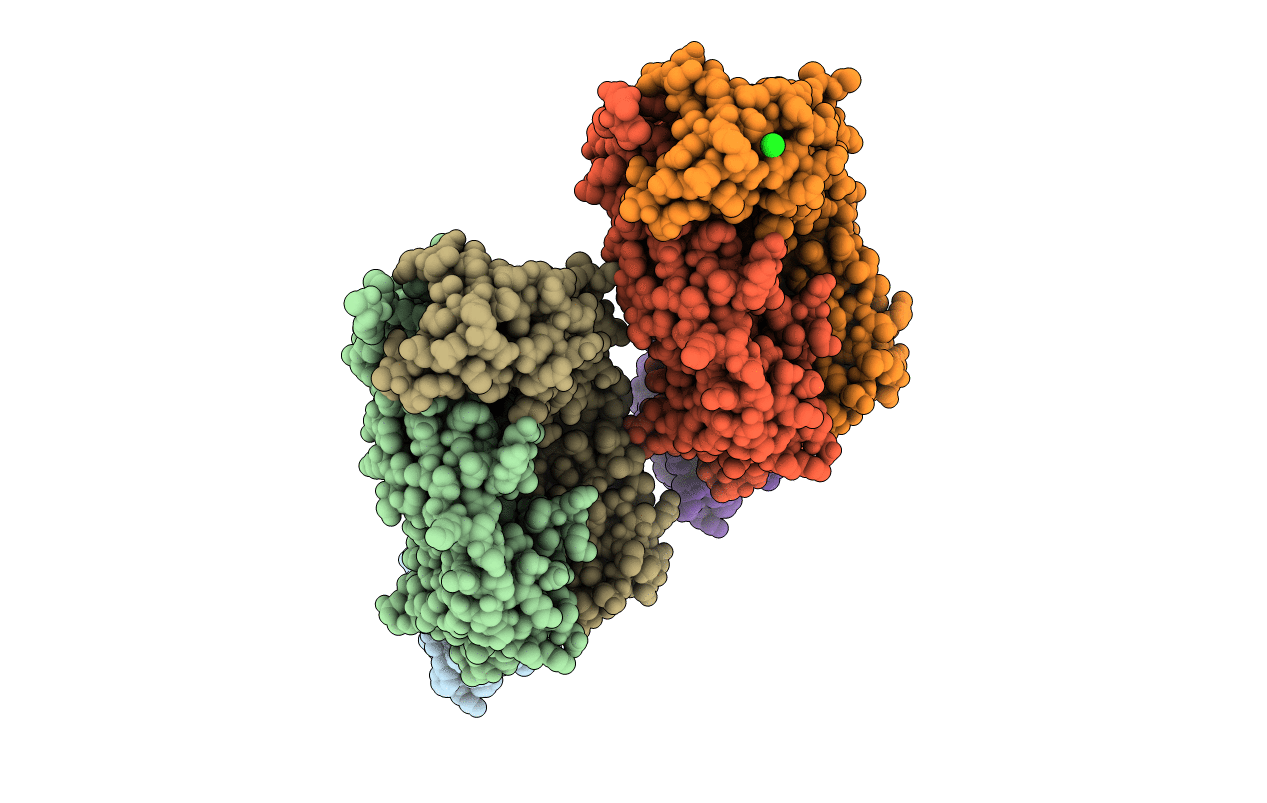
Deposition Date
2020-12-08
Release Date
2021-04-07
Last Version Date
2024-10-23
Entry Detail
PDB ID:
7KYL
Keywords:
Title:
Powassan virus Envelope protein DIII in complex with neutralizing Fab POWV-80
Biological Source:
Source Organism:
Powassan virus (Taxon ID: 58535)
Mus musculus (Taxon ID: 10090)
Mus musculus (Taxon ID: 10090)
Host Organism:
Method Details:
Experimental Method:
Resolution:
2.00 Å
R-Value Free:
0.22
R-Value Work:
0.19
R-Value Observed:
0.19
Space Group:
P 1 21 1


